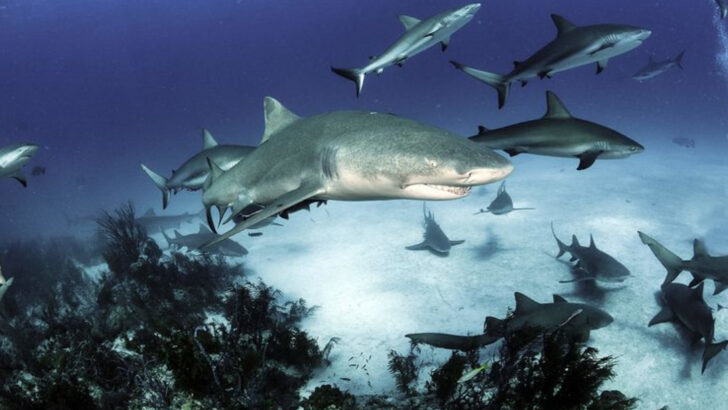Blue sharks are the supermodels of the sea—sleek, mysterious, and wildly misunderstood.
They glide through the ocean like a whisper, cobalt bodies shimmering just beneath the surface. And yet, while other sharks hog the spotlight, these deep-sea beauties barely get a headline.
But make no mistake—blue sharks are far from ordinary.
They travel thousands of miles with ease.
They school like fish, strike like lightning, and dive deeper than most submarines.
And their babies? Born ready for battle, already sporting razor teeth.
Still, they’re vanishing. Fast.
Caught in nets, sliced for fins, forgotten by most.
So let’s flip the script.
Let’s shine the light where it belongs—on one of the ocean’s most elegant and overlooked hunters.
The Vibrant Blue Hue
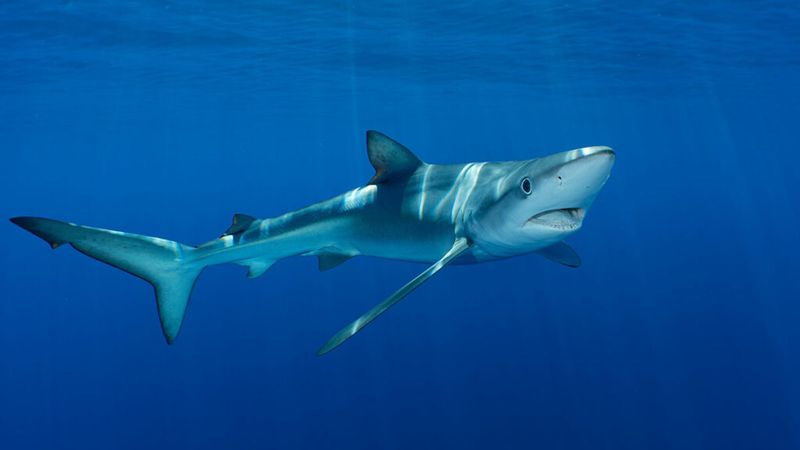
The blue shark is known for its striking blue coloration, which is not just a feast for the eyes but serves a vital functional purpose. This vibrant hue provides excellent camouflage in the open ocean, blending seamlessly with the water’s surface when viewed from above. The coloration ranges from deep indigo to a bright azure, depending on various factors like age and water conditions. It’s this mesmerizing color that often captures the attention of divers and marine enthusiasts, making the blue shark one of the most photographed sharks in the world.
Remarkable Swimmers
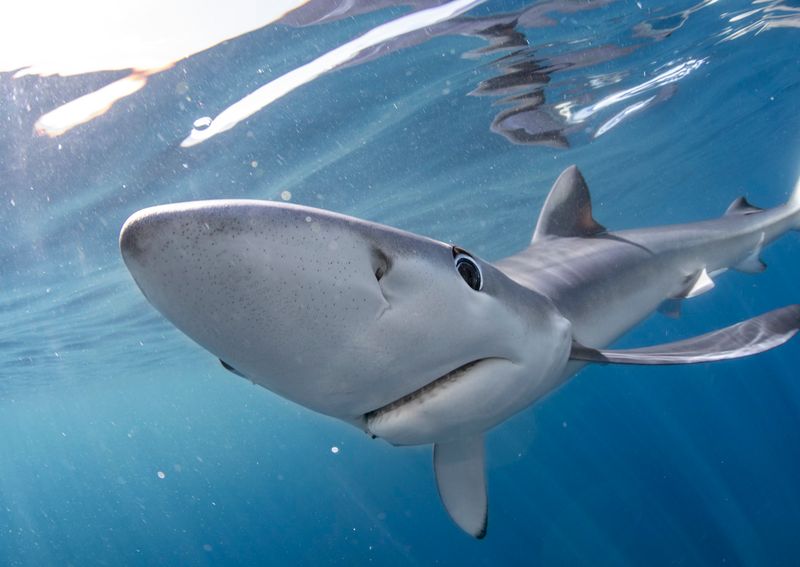
Blue sharks are built for speed and endurance, making them exceptional swimmers. Their elongated bodies and long pectoral fins allow them to cover vast distances in search of food or mates. These sharks can travel thousands of miles across oceans and are known to migrate between continents. This impressive ability to navigate the world’s waters is aided by their keen sense of direction and highly developed sensory organs. For marine biologists, tracking their migrations provides crucial insights into ocean health and climate change impacts.
Social Creatures
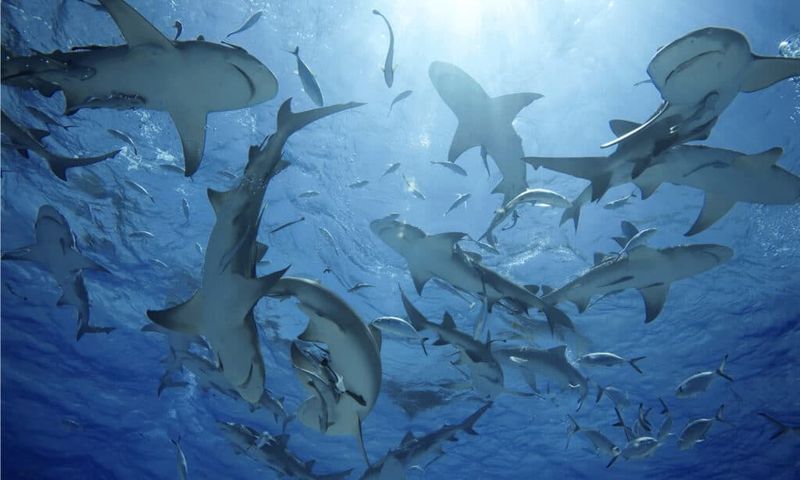
Unlike many other shark species, blue sharks are known for their social nature. They often form groups, known as schools, which can consist of several individuals. These schools are usually segregated by size and sex, with larger females often leading the group. This social behavior is believed to offer protection against predators and aid in hunting. The communal lifestyle of blue sharks is a fascinating aspect of their life history, showcasing a side of shark behavior that is often overlooked.
Masters of Migration
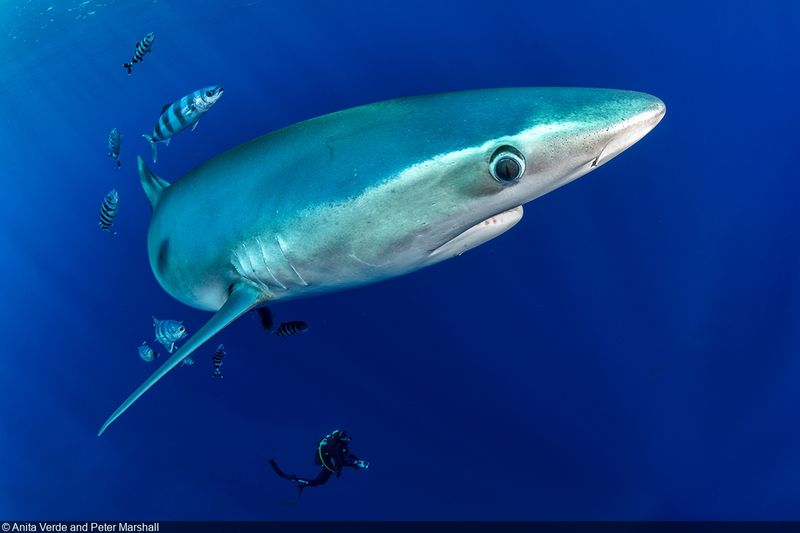
Blue sharks are true ocean wanderers, renowned for their extensive migratory patterns. They embark on long journeys, traversing entire oceans as they follow temperature changes and prey movements. These migrations can span thousands of miles, with some sharks traveling from the cold waters of the North Atlantic to the warmer currents near the equator. This extraordinary behavior not only highlights their adaptability but also their importance in maintaining marine ecological balance across different oceanic regions.
Efficient Predators
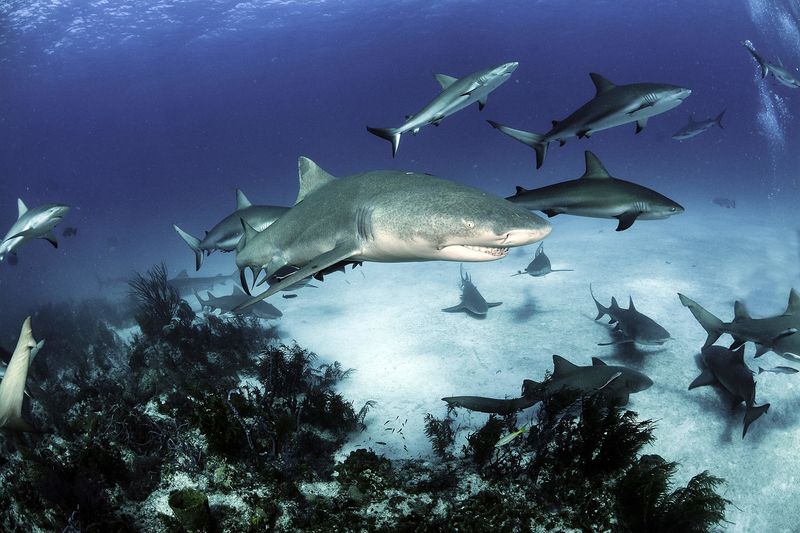
With a sleek and streamlined body, the blue shark is an efficient predator in its ocean habitat. It feeds on a diet primarily consisting of squid and small fish, using its keen senses to locate and capture prey. Their sharp teeth and swift movements make them formidable hunters. Despite their predatory nature, they play a crucial role in the marine ecosystem by helping to regulate the populations of their prey species, ensuring a balanced and healthy ocean environment for all marine life.
Unique Reproductive Strategy
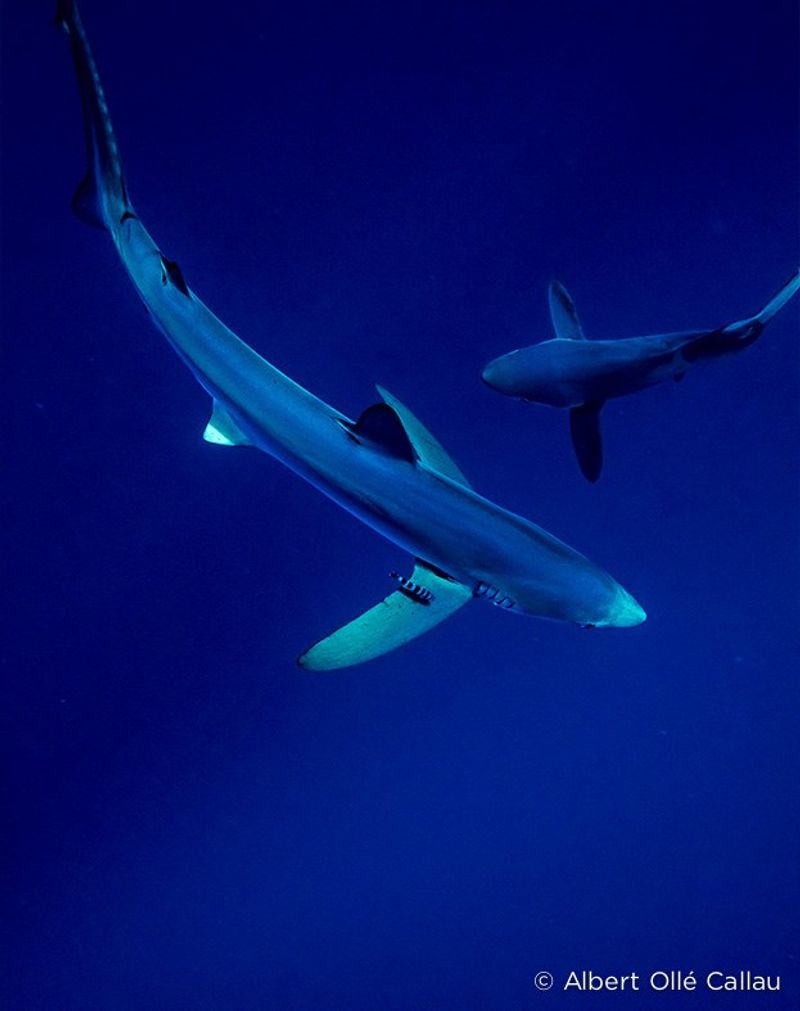
Blue sharks have a fascinating reproductive strategy that sets them apart from many other shark species. They are viviparous, giving birth to live young after a gestation period of nine to twelve months. A single litter can consist of 25 to over 100 pups, which is an unusually high number for sharks. This reproductive strategy ensures a higher survival rate for the young, as they are born ready to swim and fend for themselves. The blue shark’s prolific reproduction is a key factor in its resilience and widespread distribution across the oceans.
Adaptable Diet
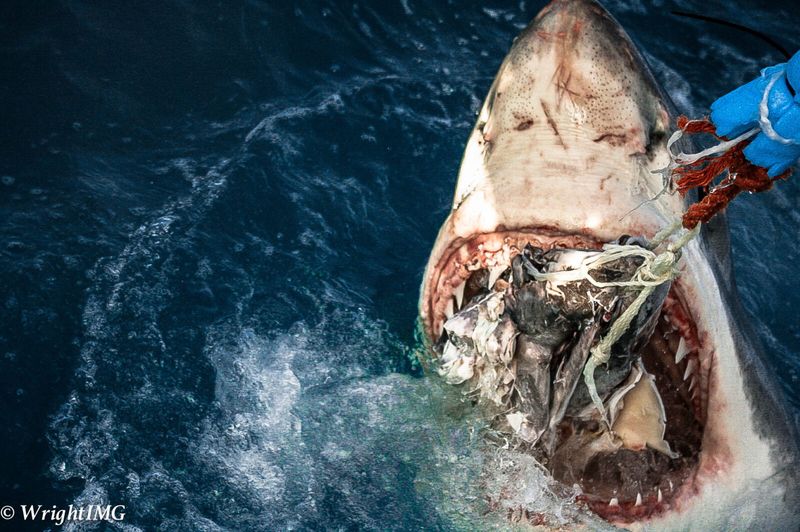
Blue sharks exhibit a remarkably adaptable diet, enabling them to thrive in diverse marine environments. While they primarily prey on squid and small fish, they are opportunistic feeders capable of adjusting their diet based on availability. This adaptability allows them to survive in varying oceanic conditions, ranging from nutrient-rich coastal waters to the open sea. Such dietary flexibility highlights their intelligence and versatility as predators, ensuring their survival even as oceanic ecosystems undergo changes due to human activity and climate fluctuations.
Threats From Humans
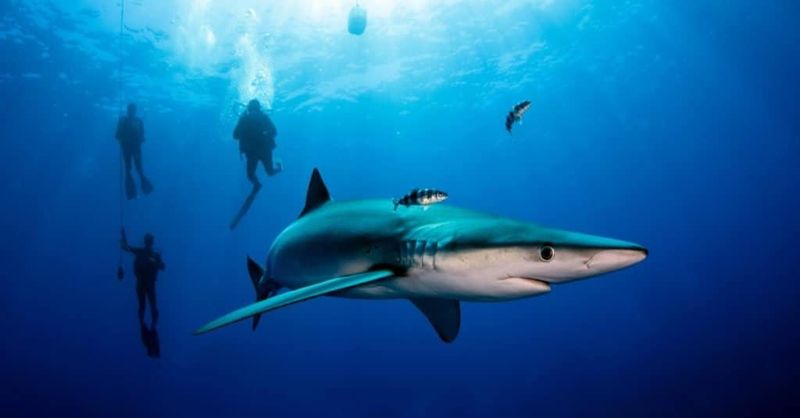
Blue sharks face significant threats from human activities, particularly from the fishing industry. They are often caught as bycatch in commercial fishing nets, leading to a decline in their populations. Additionally, they are targeted for their fins, which are highly valued in certain markets. This exploitation has led to a decrease in their numbers, raising concerns about their conservation status. Efforts to protect blue sharks are crucial to ensure the survival of this important species and maintain the balance of marine ecosystems.
Cultural Significance
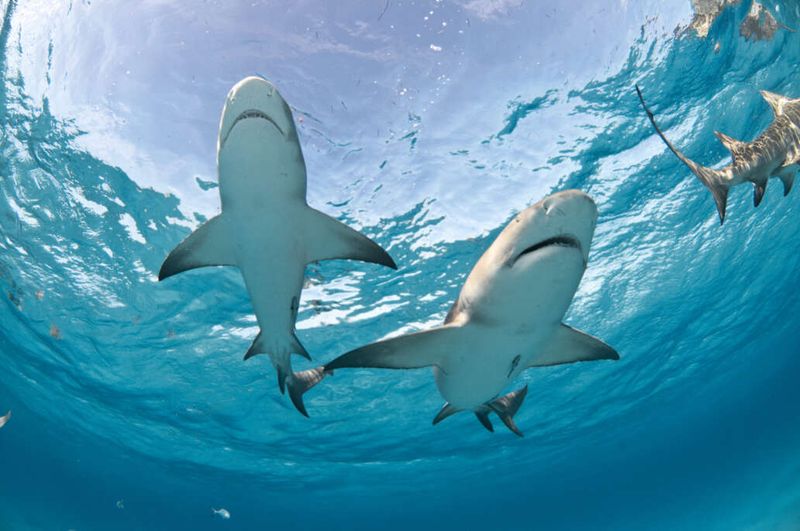
Blue sharks hold cultural significance in various coastal communities around the world. In some cultures, they are revered as symbols of strength and resilience, often featured in folklore and traditional art. This cultural reverence reflects the deep connection between humans and the ocean, highlighting the role of blue sharks in inspiring awe and respect for marine life. Preserving this cultural heritage is important for future generations, emphasizing the need to protect these magnificent creatures and their oceanic habitats.
Role in Ecosystems
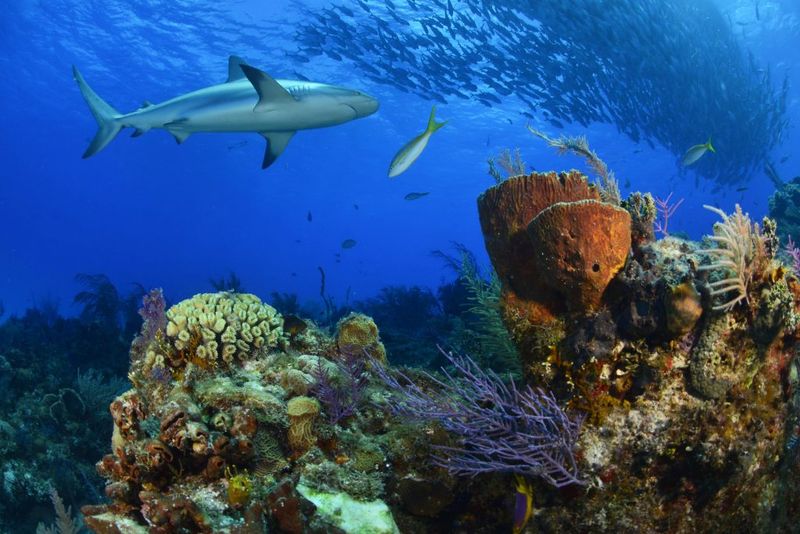
As apex predators, blue sharks play a vital role in maintaining the health and stability of marine ecosystems. By preying on weaker or diseased animals, they help to keep fish populations healthy and balanced. This ecological role prevents the overpopulation of certain species, which could otherwise lead to habitat degradation. Blue sharks’ presence in the ocean is an indicator of ecosystem health, and their decline could signal environmental issues. Their conservation is essential for the continued balance and resilience of oceanic environments.
Graceful and Elegant
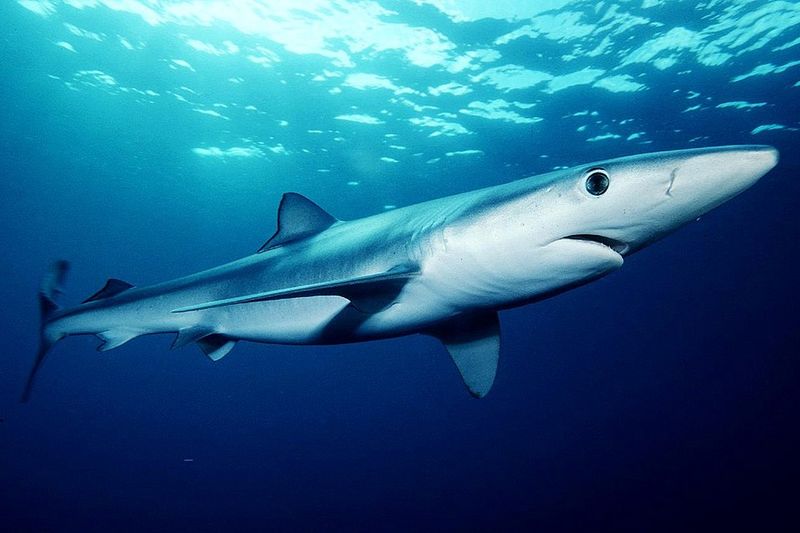
The blue shark is often admired for its graceful and elegant movements in the water. With a slender, streamlined body, it glides effortlessly through the ocean, captivating observers with its fluid motion. This grace is not just an aesthetic attribute but a reflection of its evolutionary adaptations for efficient swimming and hunting. Its elegance in motion is a reminder of the beauty and complexity of marine life, inspiring efforts to protect these creatures and their habitats for future generations to appreciate and enjoy.
Scientific Importance
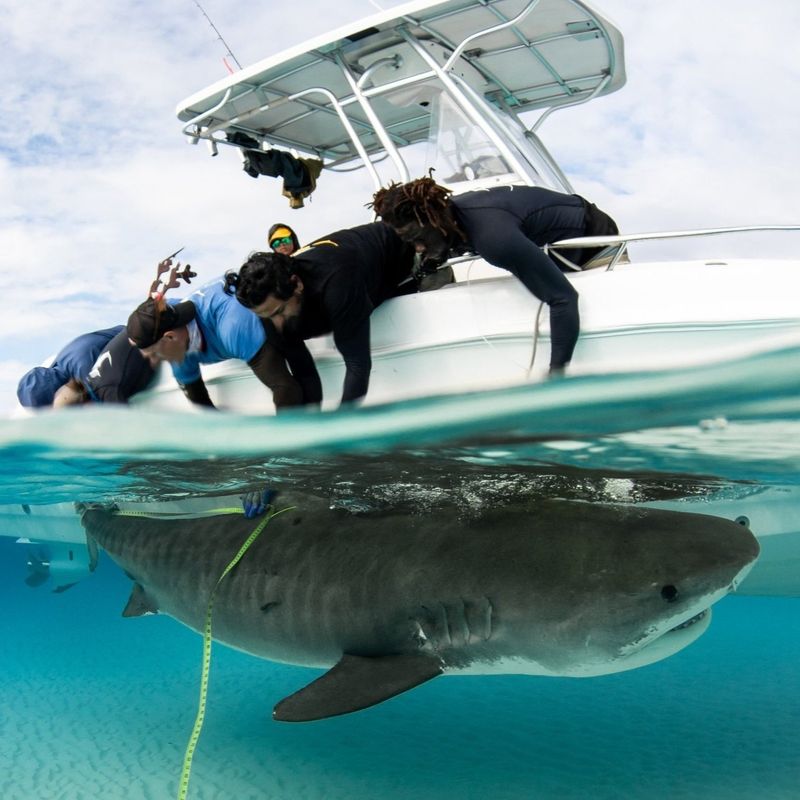
Blue sharks are of great scientific interest to marine biologists and oceanographers. Their migratory patterns, social structures, and physiological adaptations provide valuable insights into oceanic ecosystems and the challenges they face. Studies on blue sharks contribute to our understanding of marine biodiversity and the impacts of climate change on marine life. Their role as indicator species makes them essential in monitoring ocean health and guiding conservation efforts. The scientific community continues to explore their mysteries, revealing new knowledge about the interconnectedness of life in our oceans.

